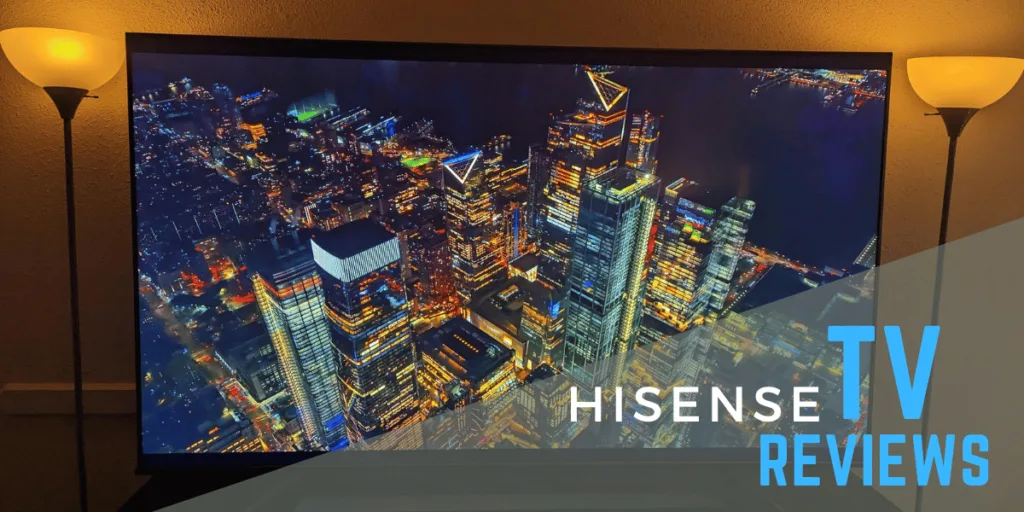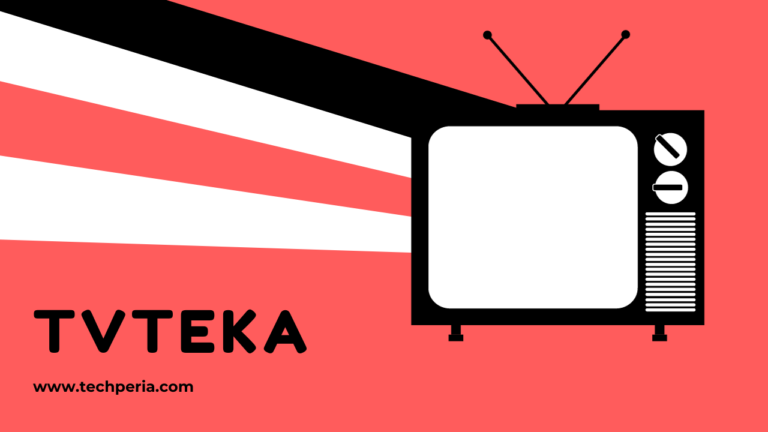So you’re searching for Hisense Tv Reviews your next television and see some Hisense TVs that seem like amazing deals. The prices look almost too good to be true though.
You start thinking are hisense TVs are good? Or will I regret buying one?
I’ve tested tons of televisions over the years, so let me give you the inside scoop. Many people are understandably skeptical about buying from brands they’re less familiar with, especially at budget prices.
But in my experience, Hisense TVs can definitely compete with the big names and offer serious bang for your buck.
Now don’t just take my word for it. Plenty of thrilled Hisense owners have shared their positive experiences after taking the plunge on one of these value-packed TVs.
Plenty of satisfied customers seem to agree with My assessment.
Buyer BobC. shares:
I researched MiniLED TVs for months and read all the great reviews for the Hisense ULED range. I bought the top-of-the-line 65″ U8K as soon as it was available and am thrilled with its performance! With lots of local dimming zones, Dolby Vision, and HDR10 compatibility, this TV performs well for movies, sports, and games.
BobC. Buyer Hisense.
Guardians of the Galaxy had vivid colors. This TV is bright and realistic, perfect for watching sports in my sunlit family room. Finally, my son recommended a 144Hz native refresh rate for gaming. He loves the TV’s PS5 and PC gaming smoothness. This TV outperforms everything. Strongly advised!
The consensus from consumers appears to be that Hisense TVs can hold their own compared to pricier brands when it comes to features, technology, and durability. For budget-conscious shoppers, they offer stunning quality at lower price points.
Of course, I suggest doing your own research to find the right Hisense model with the screen size, resolution, smart features and connectivity you need. Taking the time to read reviews from verified buyers is a smart move.
But in my opinion, Hisense TVs represent serious value that can give you quality viewing experiences without breaking the bank.
Another reviewer named Ande. Shares:
After reading positive reviews of this TV from both professional and consumer reviewers, I took the plunge and got the TV for our recent basement remodel.
Ande. Buyer Hisense.
The TV has been amazing. The picture is always great, and it actually sounds pretty decent out of the box as well. We paired it with a soundbar and subwoofer and now it’s just about perfect.
Buyers like Camilo. Shares a detailed Review:
The Hisense U8H55 TV I bought lately exceeded my expectations. First, pricing. This TV’s performance and affordability are unmatched.
Now, picture quality. Simply amazing. Colors, contrast, and clarity are stunning. Deep blacks from the panel bring scenes to life with stunning richness.
This TV is stunning for movies, sports, and games. If you’re using this TV with PS5 or Xbox Series X games, tweak the settings.This TV excels at gaming. It enables 120Hz refresh rate and 4K HDR games for an immersive gaming experience.My Previous Hisense had a panel failure despite the 2-year warranty. I upgraded to the U8H55, and so far, no problems. Always check the warranty terms.The Hisense U8H55 is currently the greatest value TV. Its high-tech and low-cost make it a winner. If you want great visual, gaming, and viewing, buy this. No regrets!
Camilo. Buyer Hisense.
It’s worth noting though that most Amazon reviews are positive – 4+ stars across many Hisense models.
Most Hisense TVs survive more than 5 years and are trustworthy. They’re durable like TCL and Vizio’s inexpensive TVs.
However, Some Buyers Concerns Hisense has experienced issues with quality control, and some customer reviews point out the company’s customer service is not always helpful.
So what’s the verdict based on my in-depth TV testing and consumer feedback?
I’d say Hisense TVs make very compelling options if you want the latest features on a tight budget. You can score premium technologies like 4K resolution, HDR, local dimming, smart OS at reasonable prices.
Just make sure to buy from an authorized retailer in case you need support. While pricier brands edge out Hisense on consistency, overall performance-for-value is impressive.
In the sub Mid budget range in particular, Hisense stands above competitors with better image quality, smarter platforms, and broader app selection.
So if you find a well-reviewed Hisense model that fits your needs and budget, I’d recommend giving it serious consideration.

Hisense TV Reviews
Hisense has several product lines ranging from entry-level to premium with different technologies:
- U Series – Top-end models with ULED enhancements like the U7H, U8H for stunning image quality. Competes with Samsung QLEDs and LG Nanocell.
- A Series – Mid-range quantum dot QLED TVs like A6H, A7H with excellent HDR, colors and brightness. Alternative to Vizio’s M-Series.
- R Series – Affordable Roku TV models like R6 and R8 offering great smart features and decent FHD/4K picture quality.
- E and H Series – Entry-level HD and 4K options like the 43H5570G with basic specs and connectivity. Compares to TCL 3 and 4 Series.
The Best Hisense TVs for Every Budget
As a tech reviewer who’s tested countless televisions, I’m often asked, What are the best Hisense models to consider?
While everyone’s needs differ, here are my top Hisense picks under various price points and categories for shoppers seeking quality without breaking their budget.
Best Overall: Hisense TV U8H Quantum ULED 4K TV
If you want the pinnacle of Hisense technology with the best image quality and features, the U8H line truly impresses me as a reviewer and consumer.
This 4K quantum dot TV with ULED local dimming and up to 1000 nits peak brightness produces stunningly vivid, true-to-life images that rival far pricier flagships from Samsung and LG.
Reviewers and buyers consistently praise the U8H models for their incredible color accuracy, perfect black levels thanks to the 480 dimming zones, and immersive HDR pop.
Gaming performance also excels with four HDMI 2.1 inputs supporting 4K/120FPS gameplay. And the smart Google TV experience delivers all your favorite apps.
For shoppers wanting flagship performance at an affordable price, I can wholeheartedly recommend the 65” or 75” U8H as Hisense’s current masterpiece TV and the one I’d personally buy for my dream viewing experience.
You simply won’t find a better combination of display technology and value.
Best Upper Mid-Range: Hisense U8 Quantum ULED 4K Smart TV
As a slightly more affordable option from Hisense’s premium ULED lineup, the U8 quantum dot 4K TV brings impressive brightness exceeding 1000 nits, a 120 Hz effective refresh rate for fast-paced action, and full array backlighting with up to 132 local dimming zones for deep blacks.
Gamers are treated to HDMI 2.1 inputs, ALLM, and ultra-low input lag, while cinephiles will appreciate Filmmaker modes for accurate color and motion.
Built-in voice control makes finding content a breeze. Right now, the 65” U7H delivers truly exceptional 4K imaging and responsiveness that compete comfortably with this price offerings. It’s great high-end value.
Best Mid-Range: Hisense Premium 65U7G Quantum 4K Smart TV
In the middle tier, Hisense’s Premium 65U7G line hits a sweet spot for buyers wanting excellent 4K HDR performance with smart features at reasonable prices. Powered by quantum dot technology, these TVs produce over a billion rich colors and impressive brightness – even in sunlight – for immersive HDR movies and shows.
Reviewers consistently praise the Premium models for their smooth, fast response thanks to the 120Hz panel and gaming modes.
Built-in Google Assistant allows intuitive voice control and hands-free navigation. For the size and price, it’s hard to beat the picture-quality-for-value delivered by options like the 55”, 65” and 75”.
Best Budget Big Screen: Hisense A6 Quantum 4K Smart TV
Big-screen home theater doesn’t have to cost big money. Hisense’s A6 gives you a cinema-like 75” 4K HDR screen using UHD and Wide Color Gamut technologies. While image precision lags the quantum dot models, color and contrast remain pleasingly vibrant – perfect for casual TV watchers who want great size at a discount.
Plus you get built-in Android smart features and apps so it can be an all-in-one solution. If you want to maximize your screen real estate for gaming and movies on a budget, the A6 is simply a stellar buy.
Best Entry-Level: Hisense R6090G Roku UHD Smart TV
In the budget tier, Hisense’s Roku TVs like the 49.5-inch R6090G stand out by offering straight forward streaming and connected features.
As an entry-level bedroom or dorm TV, the R6090G provides decent 4k image quality for this compact size along with easy usability thanks to Roku’s familiar tile-based interface and smartphone control app.
It may lack bells and whistles like HDR and local dimming. But the abundant apps, solid smart platform and low cost make the compelling basic TV pick – more versatile than similarly priced “dumb” models lacking “smart” capabilities.
The Takeaway
Whatever your budget or use case, Hisense’s broad lineup offers appealing options that cater to many buyers.
Combining the latest technology like quantum dot QLED and Mini LED displays with affordable pricing gives Hisense an advantage in areas like picture quality, making them worthy contenders against pricier brands.
Just be sure to buy from authorized retailers to get your warranty support.
You May Also Like
Who Makes Hisense TVs? A Startup Became a Global Brand
How Hisense TVs Stack Up Against Other Leading Brands
As a value TV brand, Hisense aims to deliver quality 4K televisions with premium features at more affordable pricing than competitors like Samsung, LG and Sony.
But how do they actually compare? Here’s an in-depth look at how Hisense fares on key aspects versus rivals.
Picture Quality
Hisense TVs utilize high-end display technologies like ULED and quantum dot QLED to produce bright, colorful and high-contrast visuals that impress reviewers and consumers.
While not matching the consistency of more expensive Samsung and LG sets, Hisense models like the U7H and U8H come surprisingly close in realistic and vibrant 4K imaging for the cost.
Entry-level options provide decent HD picture quality for budget buyers as well.
Motion Handling
With 120Hz effective refresh rates, automatic low latency modes and gaming-optimized calibrations, Hisense TVs like the U8H and A6H handle fast motion and gaming as smoothly as competing sets from Sony and Vizio in their respective price ranges.
Reviewers praise the crisp, jitter-free visuals when watching sports or playing fast-paced titles.
Smart Features
Hisense TVs utilize intuitive smart platforms like Google TV and Roku TV that provide an easy out-of-box experience and access to all the top streaming apps and services.
Many models also integrate voice control through Google Assistant or Alexa for handy hands-free navigation and searches.
Sound Quality
Collaborations with brands like DTSStudio Sound, Dolby Atmos decoding and dedicated audio hardware give Hisense TVs better built-in audio than most budget models from discount brands.
Of course, Samsung and LG still lead in sheer sonic power and fidelity, but Hisense’s speakers suffice for most casual viewing.
Viewing Angles
One downside of Hisense’s predominant use of VA display panels is narrower viewing angles than Samsung’s QLED TVs which maintain color and contrast at wider positions.
So if you have a very large living room, Samsung is a better uniformity choice. But for normal viewing distances, Hisense provides satisfying image quality.
In summary, Hisense TVs make extremely competitive options that rival or beat comparably priced models from the major brands in core performance areas like 4K picture, gaming responsiveness and smart functionality.
While not best-in-class, the technology and value you get certainly helps Hisense make a strong case versus many competitors.
Comparing Hisense With Other Brands
Hisense vs TCL
Both Hisense and TCL are known for budget-friendly TVs that offer strong performance for the money. Hisense sets tend to achieve better contrast, black levels and brightness compared to similarly priced TCL models. But TCL Roku TVs provide a smarter, more intuitive interface. For the price, both make quality options depending on individual features you prefer.
Hisense vs Vizio
Hisense and Vizio are neck-and-neck when it comes to affordable pricing for their performance TVs. Vizio sets do achieve better black uniformity with fewer gray shadows. However, Hisense TVs integrate more advanced gaming features like variable refresh rate and offer a better selection of smart platforms like Android TV and Roku TV. Overall they are closely matched.
Hisense vs Samsung
Samsung QLED TVs with quantum dot technology have superior brightness, HDR capabilities, viewing angles and smart ecosystems versus Hisense. But you’ll have to step up to Samsung’s premium, and expensive, Neo QLED models to get those advantages. When it comes to mid-range models, Hisense can compete on display quality with Samsung while costing much less.
Hisense vs LG
LG’s acclaimed OLED TVs are widely considered the best TV technology you can buy today, achieving perfect blacks and amazing contrast beyond any Hisense model. However, you’ll have to spend over $1000 more compared to Hisense TVs of equivalent sizes. For buyers wanting impressive picture without the premium cost, Hisense presents strong competition to LG LED/QLED models.
In-Depth Comparison of Hisense with Other Brands
1. Compare Hisense Picture Quality With Other Brands
Hisense vs Samsung – Samsung’s 2022 Neo QLEDs powered by quantum mini-LED backlighting achieve superior peak brightness hitting 2000 nits, widened color gamuts exceeding 100% of DCI-P3, and advanced contrast control with precision dimming zones that CCTV Hisense.
However, Hisense models like the U7H Quantum ULED come surprisingly close to Samsung’s mid-tier QLEDs, matching them closely in black levels, contrast, color vibrance and realism at a much lower price point.
Hisense vs LG – LG’s acclaimed OLED TVs with independent self-lit pixels and infinite contrast ratios deliver unparalleled deep blacks, immense HDR pop, and pixel-level precision in image quality that no LED/QLED model from Hisense can match.
However, Hisense’s premium Quantum Dot and ULED technologies allow its higher-end LED sets to compete very strongly on color reproduction, 4K clarity, sustained brightness and contrast against LG’s less expensive NanoCell LED line-up.
Hisense vs Sony – Powered by the advanced cognitive XR processor, Sony’s high-end TVs achieve better upscaling of lower resolution content to 4K, smoother color and brightness gradients, and optimized color accuracy out of the box.
However, the real-world difference in 4K picture quality between comparable Hisense and Sony models is quite marginal and not worth the huge price premium Sony commands.
Hisense vs TCL – Looking at models priced closely in the mid-range, Hisense TVs like the U6H Quantum achieve slightly better black levels, brightness, and backlight control and uniformity owing to advanced ULED technology.
However, TCL’s mini-LED 6-Series models exhibit fewer issues with grayscale and color uniformity compared to Hisense. Both provide excellent 4K quality and performance for the money.
Hisense vs Vizio – Hisense and Vizio mid-range models produce very similar 4K picture quality with vibrant colors, deep contrast and solid HDR performance for affordable prices.
Vizio’s M-Series Quantum has the edge in dark scene uniformity but Hisense’s sets beat it in peak brightness levels and smooth motion handling. Overall excellent performers that go toe-to-toe.
2. Compare Hisense Motion Handling With Other Brands
Hisense vs Panasonic – Panasonic’s acclaimed Hollywood-tuned processing and Intelligent Frame Creation technology enables its TVs to precisely analyze content to add new frames and optimize settings for remarkably smooth, film-like motion clarity.
Hisense has made positive strides in motion processing but still exhibits more judder and artifacts, especially in panning shots and complex action scenes, versus Panasonic’s pristine movie-like fluidity.
Hisense vs TCL – Both Hisense and TCL incorporate native 60Hz or 120Hz refresh rate panels combined with Auto Low Latency Modes to minimize lag and boost responsiveness for smooth gaming and sports viewing.
For motion clarity, TCL 6-Series has a slight edge in 24p film judder while Hisense models better handle blur reduction for action scenes. Overall very similar motion performance given the price points.
Hisense vs Vizio – Hisense and Vizio both effectively leverage QLED/ULED panels and technologies like frame interpolation to achieve low input lag for gaming along with good clarity for fast on-screen motion.
Hisense TVs better minimize motion blur in action scenes thanks to black frame insertion but Vizio conversely handles 24p film judder better. Evenly matched overall.
Hisense vs Samsung – Samsung TVs consistently outperform Hisense in motion resolution owing to faster response times, precision black frame insertion techniques like PWM dimming, and predictive analytics to optimize settings based on content type.
This results in pristine smoothness and clarity for sports, video games and movies that Hisense cannot match.
Hisense vs LG – LG’s acclaimed self-lit OLED TVs deliver unmatched motion fluidity with virtually instantaneous pixel response times.
Mid-range LED models are more closely comparable between the brands owing to equivalent native refresh rates and gaming performance.
For the price, Hisense competes well on motion but LG OLEDs are in another league.
3. Compare Hisense Smart Features With Other Brands
Hisense vs Panasonic – Panasonic’s My Home Screen platform is fairly basic and lacks in certain video streaming apps compared to Hisense’s smarter operating systems like Android TV and Roku TV.
Hisense offers an edge for cord-cutters with broader app support and simpler interfaces. But Panasonic’s TVs maintain focus on cinematic picture quality.
Hisense vs TCL – Hisense and TCL smart TVs run on very similar Roku TV and Android TV platforms for straightforward setup and access to top streaming apps.
TCL’s interface is a bit more polished while Hisense offers nice integrations like Chromecast built-in. For the budget segment, both brands deliver robust smart functionality.
Hisense vs Vizio – Hisense clearly provides a superior smart TV experience over Vizio with Android TV and Roku TV interfaces that are easier to use and packed with many more apps and customization capabilities. Vizio SmartCast is too basic and lacks key streaming services.
Hisense vs Samsung – Samsung’s Tizen OS edges out Hisense platforms like VIDAA in terms of speed, optimization and interface polish.
Samsung also offers better ecosystem integration and voice control via Bixby. However, core video streaming apps and content remain very similar between the two brands.
Hisense vs LG – LG’s acclaimed webOS platform stands out with its simpler menus, faster speeds, seamless ThinQ AI integration and visually polished design versus Hisense’s smart systems.
However, Hisense Android TV and Roku TV still provide easy access to all the major streaming apps and services.
4. Compare Hisense Sound Quality With Other Brands
Hisense vs Panasonic – Panasonic leverages its audio expertise to finely tune its high-end television speakers and integrate discrete amplifiers and Dolby Atmos technologies for room-filling, nuanced cinematic sound that outpaces Hisense’s more basic built-in audio capabilities.
Hisense vs TCL – Both Hisense and TCL focus engineering efforts on display quality rather than audio performance in their budget-priced TV models. However, TCL’s Roku TV line generally offers better out-of-box audio tuning for clearer dialogue, wider dynamic range, and more immersive soundstaging.
Hisense vs Vizio – Very similar audio performance between Hisense and Vizio’s mid-range TV offerings. Neither provides premium sound, instead concentrating spending on visuals. Some Vizio models with Dolby Audio integrated can deliver slightly fuller sound, but overall a tie.
Hisense vs Samsung – Samsung TVs clearly beat Hisense in sound quality, thanks to heavy audio hardware integration like customized speakers, object tracking sound, and Q-Symphony to deliver powerful, multi-dimensional cinematic audio effects that budget Hisense models cannot match.
Hisense vs LG – Powered by advanced processors like LG’s a9 Gen 5 AI Chip, LG’s premium TVs analyze and optimize audio in real-time for clearer dialogue, deep bass, and immersive virtual 5.1 surround sound that noticeably outperforms Hisense’s more basic onboard speakers.
5. Compare Hisense Gaming Performance With Other Brands
Hisense vs Panasonic – Both Hisense and Panasonic focus gaming features on select high-end models rather than across all TVs. Hisense gaming TVs compete well with ALLM, VRR and 4K 120Hz support. But Panasonic’s OLEDs achieve extremely low input lag for fast-twitch gaming that Hisense cannot match.
Hisense vs TCL – Hisense and TCL pack impressive gaming features like Auto Low Latency Mode and Variable Refresh Rate even in budget 4K TV models. Input lag and response times are excellent on both to satisfy casual and serious gamers. Overall the brands are very evenly matched for responsive, smooth gaming.
Hisense vs Vizio – Vizio TVs have slightly lower input lag which is better for competitive online gaming, but Hisense TVs counter with AMD FreeSync support for compatible gaming PCs and consoles. Casual gamers will enjoy great performance on both affordable brands.
Hisense vs Samsung – Samsung’s high-end Neo QLEDs pull ahead of Hisense for gaming by enabling features like VRR, ALLM and 4K/120Hz across all screen sizes. Hisense reserves gaming features only for select premium models. Samsung also has lower input lag across resolutions.
Hisense vs LG – LG’s newer OLED TVs with ultra-fast response times and impeccable picture quality provide a superior gaming experience that Hisense cannot match. However, Hisense competes well on gaming in the mid-range LED 4K TV segment at more affordable prices.
6.Compare Hisense Design & Build QualityWith Other Brands
Hisense vs Samsung – Samsung TVs are acclaimed for their sleek, minimalist aesthetic design with nearly bezel-less screens and stylish profile.
Hisense TV design is bulky and plain in comparison. For build, Samsung uses higher-end materials like metal composite for durability versus Hisense’s mainly plastic bodies.
Hisense vs LG – LG TVs also feature very trim bezels and super slim profiles for modern, seamless viewing. Hisense lags behind in design aesthetics and opts for functional simplicity rather than luxe touches.
LG also uses better-grade metal and glass materials compared to the mostly plastic construction of Hisense.
Hisense vs Vizio – Both Vizio and Hisense prioritize function over form in their budget-tier TV models. Bezels, borders, and profiles tend to be thick with mainly plastic materials that keep costs low.
Vizio’s sets tend to have a sleeker silhouette and more distinguished aesthetic touches.
Hisense vs TCL – Very similar design and build approaches by the two budget brands. Both Hisense and TCL’s TVs have thick bezels, simple rear panels, and wide lower borders to house components.
All-plastic bodies keep manufacturing costs affordable. But this comes at the expense of premium style and material quality.
Hisense vs Sony – Sony TVs are much more stylishly designed with attention to aesthetic details like thin bezels and distinct angular metal stands.
Sony also uses higher-end materials like aluminum and soft-touch finishes. Hisense does not match this design flair and material quality given its budget-conscious roots.
7.Compare Hisense Voice Control With Other Brands
Hisense vs Samsung – Samsung’s Bixby assistant developed natively for their Tizen platform offers deep system-level control of TV settings and functions through voice. It has very quick response times and effective natural language recognition.
However, Google Assistant on Hisense Android TV models provides wider smart home device connectivity and more conversational abilities.
Hisense vs LG – LG’s webOS ThinQ AI assistant provides seamless voice control with fast processing of commands and queries. Users can swiftly navigate menus, launch apps, control playback and more through voice.
Google Assistant integration on Hisense TVs also works very well for TV operation and managing other smart devices.
Hisense vs Vizio – Hisense TVs support hands-free voice control through Google Assistant integration, allowing intuitive control of TV functions like volume, channel selection, playback and search.
Vizio SmartCast TVs significantly lack any built-in voice assistant capabilities, putting Hisense ahead.
Hisense vs TCL – The Roku TV platform on both Hisense and TCL’s smart TVs enables voice commands via Google Assistant or Amazon Alexa-powered devices.
Since the software is the same, the voice control experience is very similar between the two brands and provides effortless hands-free TV operation.
Hisense vs Sony – Sony TVs running Android TV natively integrate Google Assistant for efficient voice control much like Hisense’s models.
Users can execute TV-related tasks and also manage Google/Nest smart home devices through voice. Overall very similar voice assistant capabilities between them.
8. Compare Hisense Input Lag With Other Brands
Hisense vs Samsung – Samsung’s 2022 Neo QLED TVs have some of the lowest input lag, averaging around 10-15ms in Game Mode at 4K thanks to automatic switching to low-latency modes.
This results in extremely responsive controls for fast-paced competitive gaming. Hisense TVs range from 20-30ms input lag, decent for casual gaming but not as optimized as Samsung.
Hisense vs LG – LG’s acclaimed OLED TVs like the C2 and G2 series achieve blazing fast input lag measuring around 5-10ms, matching their nearly instantaneous response time.
No current LED/QLED TV from Hisense can compete with this level of speed and snappiness. However, LG’s mid-range NanoCell LED TVs are more comparable to Hisense.
Hisense vs Vizio – In Game Mode at 1080p resolution, Vizio TVs output noticeably lower input lag around 10-15ms enabling highly responsive 60fps competitive gameplay.
But at 4K resolution, Vizio and Hisense models exhibit similar input lag around 15-25ms for a great casual gaming experience.
Hisense vs TCL – Both Hisense and TCL optimize their gaming TV models to achieve low input lag of 15-20ms at 4K resolution, making them great options for next-gen consoles or PC gaming.
While not matching premium brands, this range satisfies most gamers outside of pro eSports players who require the absolute fastest lag.
Hisense vs Sony – Sony’s sets reach low input lag around 15ms in Game Mode at 4K, similar to Hisense’s performance.
While Sony TVs lack cutting-edge gaming features that Hisense offers like VRR, input latency itself is equally responsive between them for enjoying console and PC games.
Conclusion
while premium brands like Samsung, LG and Sony lead in certain aspects like design, materials and best-in-class performance, Hisense TVs remain highly competitive within their pricing segments.
They integrate premium technologies like quantum dot QLED panels and full array local dimming at affordable price points.
For budget and value-focused buyers not needing the utmost performance, Hisense provides appealing quality and features at hundreds less cost.
Considering their impressive displays, smooth gaming capabilities, intuitive smart platforms and overall bang for buck, Hisense TVs deserve strong consideration.
With Caveat emptor buying from unauthorized sellers, Hisense represents quality televisions consumers can enjoy without overspending.
The key is identifying the right model based on individual budget, size, feature needs and performance expectations. While certainly not perfect, Hisense TVs often punch above their weight class in core areas.
For shoppers who want great home entertainment without breaking the bank, few brands can compete with the overall value Hisense provides.
FAQ’s
What is Hisense famous for?
Hisense is known for making affordable, quality 4K smart TVs that utilize proprietary technologies like ULED to enhance picture performance.
What is the rating of Hisense company?
Hisense has a reputable “A” rating from the Better Business Bureau along with overall positive customer reviews on retail sites.
What is Hisense rating in the world?
Globally, Hisense is the 5th largest TV brand with around 10% market share worldwide as of 2022, behind leaders Samsung, LG, Sony and TCL.
What are the disadvantages of Hisense?
Common downsides of Hisense TVs include quality control issues, inconsistent customer service, and fewer premium features than top brands.
Is TCL better than Hisense?
It’s close, but many consider TCL slightly better than Hisense in consistency and value. However, Hisense’s best models compete strongly on picture quality.
Why is Hisense So Cheap?
Hisense focuses on efficiency, vertical integration, and lower profit margins rather than maximizing profits like premium brands, enabling lower prices.
Is Hisense TV better than LG?
No, LG TVs are generally considered better, especially their acclaimed OLED models. However, Hisense competes well against LG’s LED/LCD TVs while being more affordable.
Is Hisense TV better than Samsung?
No, overall Samsung TVs are better than Hisense in display quality, smart features, and brand reputation. But Hisense provides comparable technologies for lower prices.









